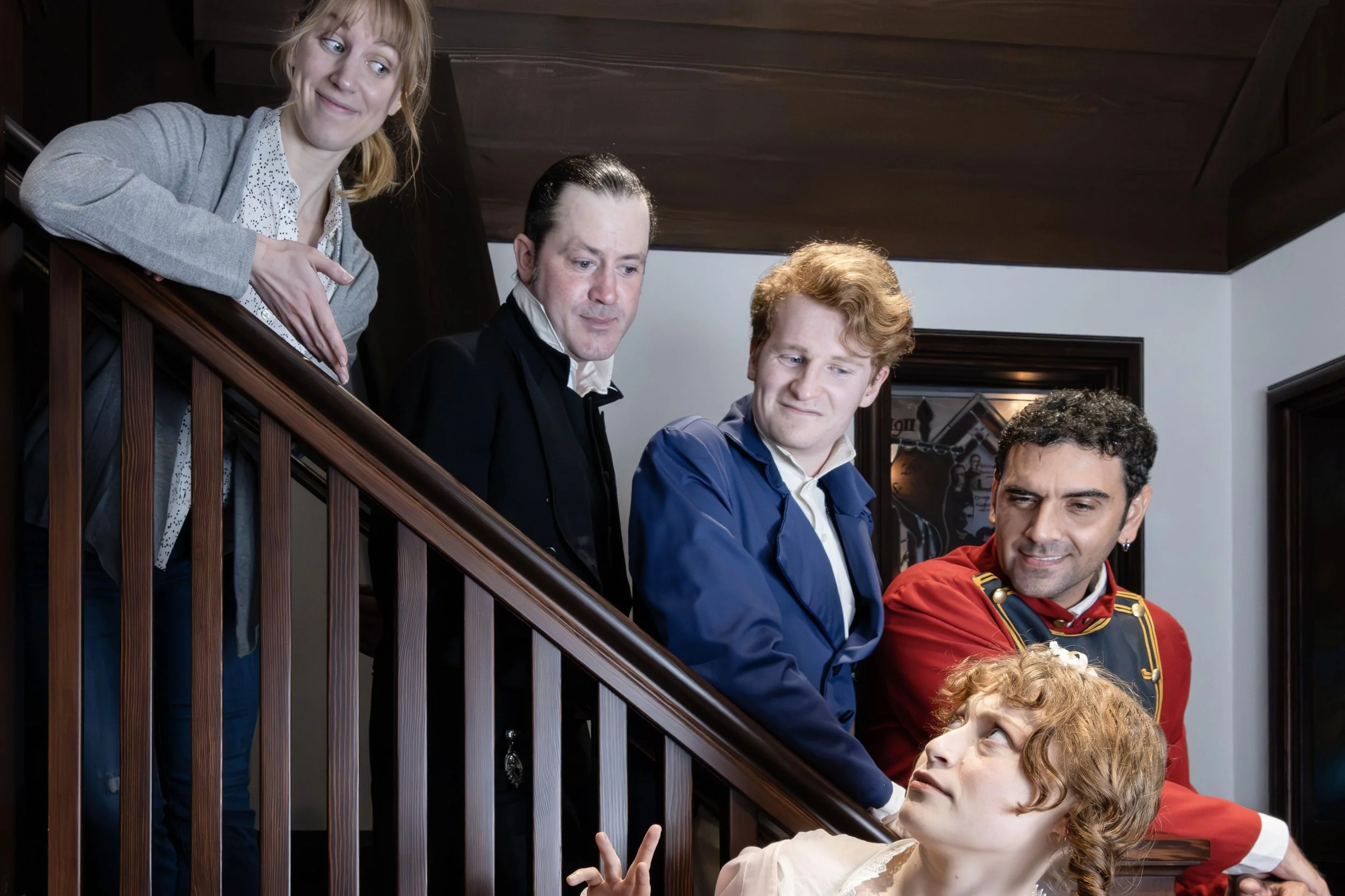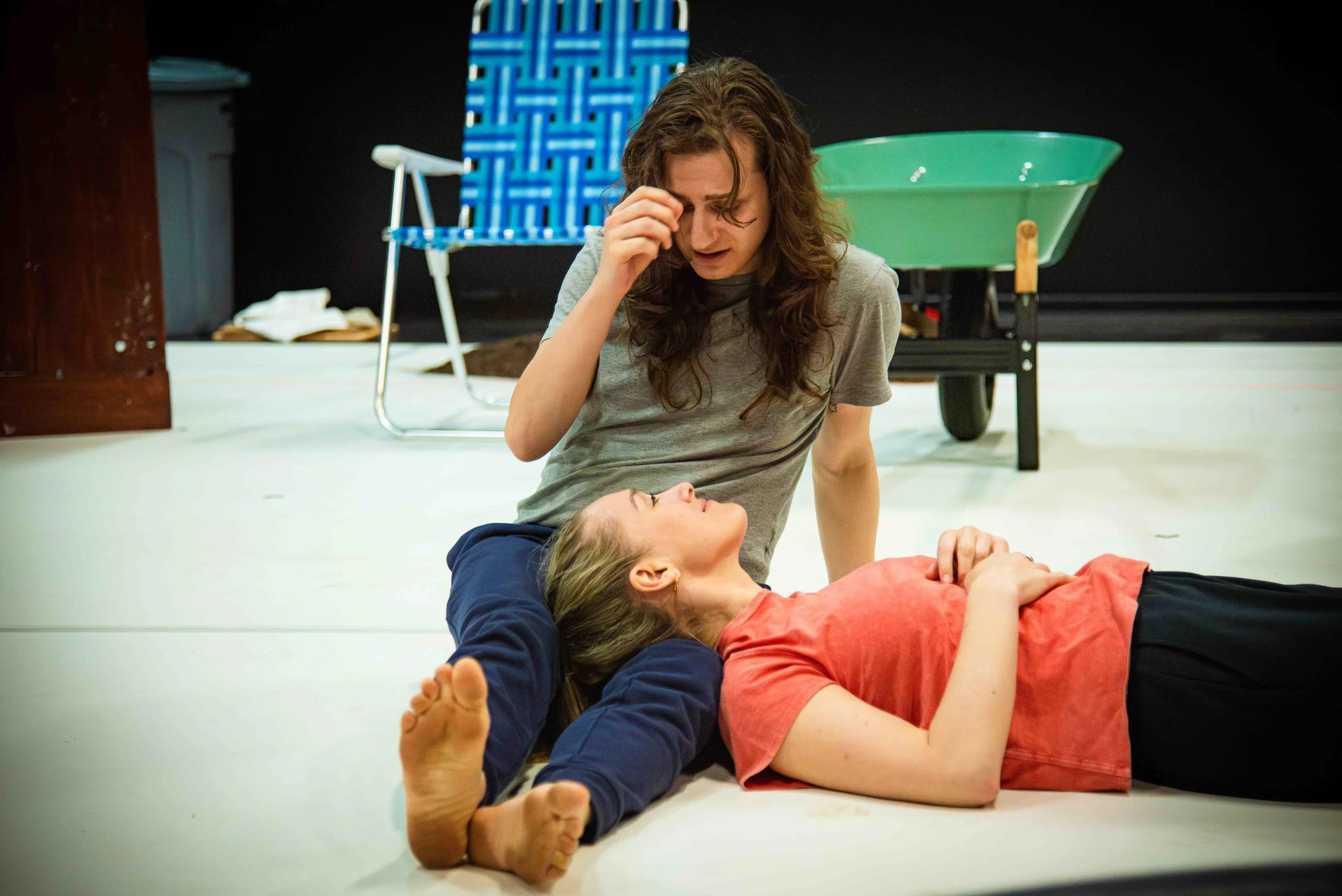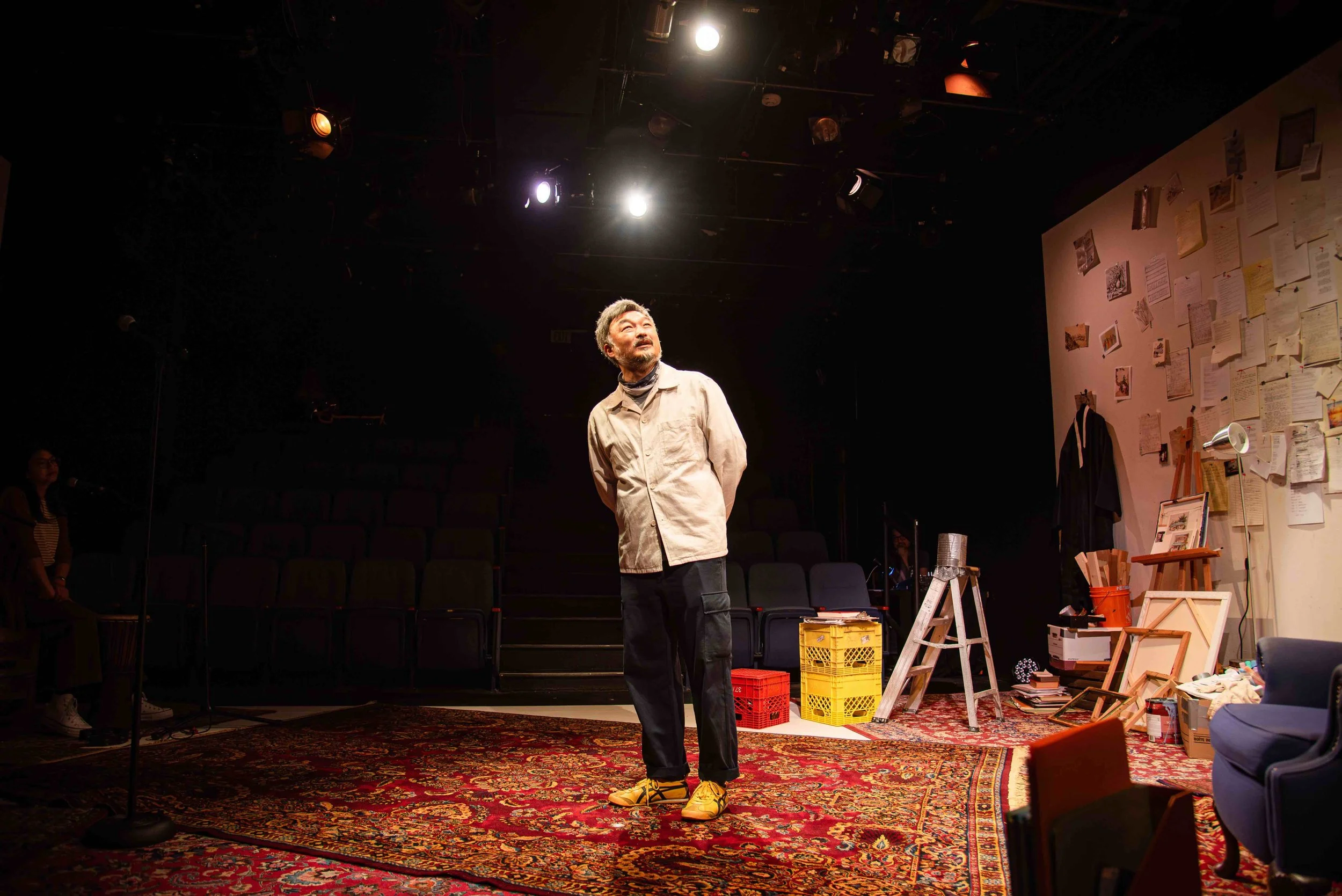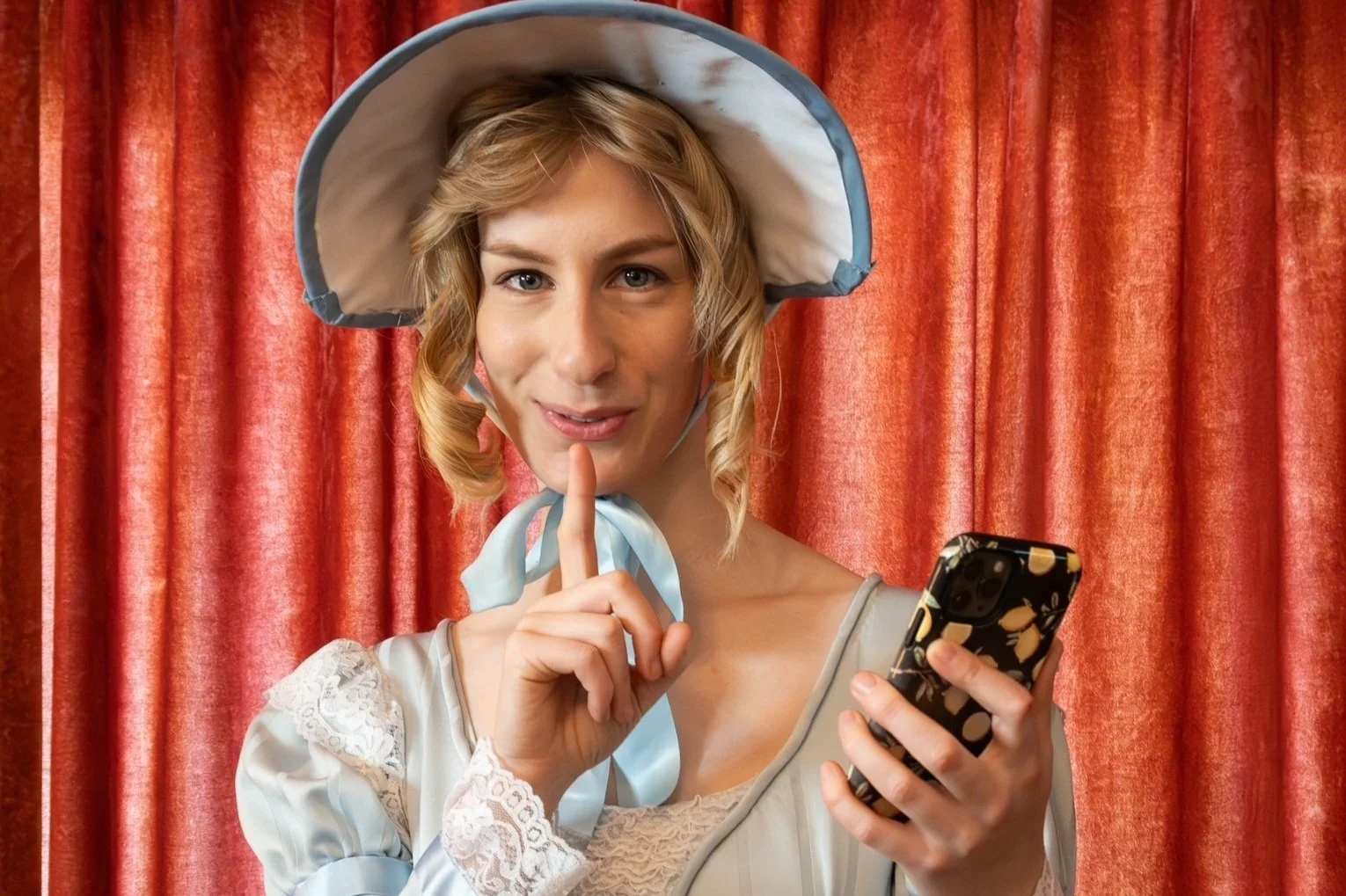Theatre review: DEAD DRONE buzzes with live theatre’s power to engage and disrupt
Blurring fantasy and urgent reality, Upintheair Theatre’s satirical new work refuses to let its audience retreat into escapism
DEAD DRONE. Photo by Matt Resnek
Upintheair Theatre presents DEAD DRONE at the Russian Hall to April 19
AS PEOPLE WAIT outside the closed theatre entrance, handbells sound off amid the crowd, signalling the start of DEAD DRONE, a futuristic dark comedy written by Upintheair Theatre’s cofounder and managing artistic director, David Mott. Drawing on the shared trauma of the COVID-19 era, the immersive production uses its speculative fiction setting to highlight the unique, transformative power of live theatre engagement.
Audience members feel the impact of DEAD DRONE’s design the moment they enter the space, where the filters of livestreams and social media spill beyond our personal screens and into the physical surroundings. Fans of video games like BioShock and Disco Elysium will find themselves right at home inside the apocalyptic, meme-ified playground created by Mott and director Tamara McCarthy. As attendees gather beneath a makeshift radio tower, surrounded by foggy projections and sound designer MJ Coomber’s bold sonic landscape, they are immediately drawn into a world where there is no escape from distraction.
McCarthy’s inventive staging of DEAD DRONE turns its theatre-in-the-round setup into an ever-shifting environment. By dividing the audience into distinct zones, she crafts pathways and sightlines that make each seat a unique vantage point. The show’s centrepiece is its mountainous radio tower, which doubles as projection screens to create dynamic levels and shifting focal points. McCarthy’s direction, paired with the design team’s layered storytelling, allows the production to leap between narratives as effortlessly as clicking between browser tabs. The result feels cohesive and choreographed, based on Upintheair Theatre’s strong teamwork and unified vision.
As noted by Mott and McCarthy, infusing the play with “weird core” aesthetic is the dramaturgical throughline, and it works beautifully alongside the story’s exploration of unease and the uncanny. This vision comes to life through scenographer David Roberts’s multifunctional set piece, prop designer Christian Ching’s thoughtful yet unobtrusive curation, and animator Jessica Hood’s lo-fi ambience. These design elements demonstrate that Upintheair Theatre is not simply critiquing digital dependency, but actively reclaiming the possibilities of live communal experience.
If the world of weird core initially feels alienating, Mott’s poetic yet grounded dialogue never leads its characters too far astray. He dances between speculative elements with moments that feel eerily familiar, tweaked by a sci-fi twist. By blending fictional jargon with recognizable real-world references, Mott blurs the line between fantasy and reality, refusing to let the audience retreat into the safety of escapism. Each knowing laugh or moment of recognition of a TikTok-inspired reference suggests that we could be as complicit as the characters onstage. DEAD DRONE serves as a satirical reminder that audience members are never just spectators, but participants in this world.
Amid a spectacle filled with puppetry, projections, and psychedelic allure, Jenny and Sam (portrayed by Evelyn Chew and Paulo Ribeiro) anchor the show as a couple trying to rekindle their troubled, socially distanced relationship. Despite taking big comedic leaps—metaphorically and literally—the characters are grounded by their earnestness. For the post-pandemic audience, some arguments between the couple may be uncomfortably familiar, showcasing Mott’s ability to balance spectacle with poignant moments of the mundane.
Darcey Johnson as the Mountaineer in DEAD DRONE. Photo by Matt Resnek
Chew and Ribeiro’s dynamic chemistry is well matched by Chloe Payne and Sarah Roa. They portray Wipple and Nim, a pair of genetically modified, enslaved beings who stumble upon a fallen drone and the chance of a lifetime. Through quick-fire banter and effective physical comedy, Payne and Roa navigate the story’s darker themes with a surreal, almost uncanny undertone. Their commitment to the sci-fi absurdity not only grounds the humour, but amplifies the tragic implications of DEAD DRONE’s cloud-infested world.
Rounding out the cast is Darcey Johnson, who deftly uses the production’s technology to embody the Mountaineer. With his chorus-like omnipresence, the character becomes a living manifestation of weird core, and perhaps a fitting nod to the post–Second World War Theatre of the Absurd movement.
DEAD DRONE banks on audience members doing their homework before entering its beehive. With a program that involves a glossary of terms and dramaturgical notes from Mott, McCarthy, and puppetry designer Randi Edmundson, this is a show where a bit of effort goes a long way for the audience. For the uninitiated who prefer to simply enjoy the ride, there is plenty to take in even if the plot might get a bit lost.
Playing with metacommentary on humanity’s growing disconnection and digital dependence, DEAD DRONE holds a magnifying glass to the possibilities beyond our screens, pulling us in so fully that, for 90 minutes, we just might forget about our phones entirely. It is within this juxtaposition of live performance and digital immersion that DEAD DRONE makes its lasting impact as a thought-provoking piece of theatre. ![]()


































